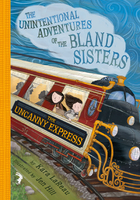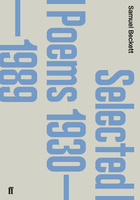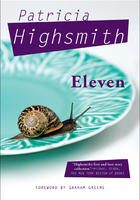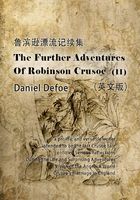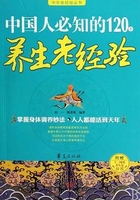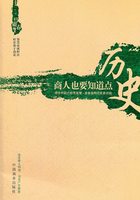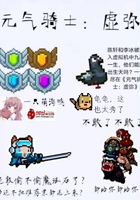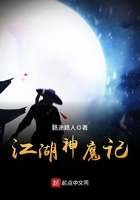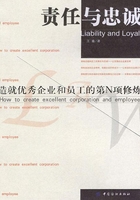Beds made. Mosquito nets handy. At Hospital No. 1, an Army nurse enjoys a quiet moment before casualties arrive. Bataan, December 1941.
DECEMBER 1941
U.S. Army General Hospital No. 1, Limay, Bataan Peninsula
The Army nurses expected to arrive at a hospital. They stared in shock at the former training camp for Filipino troops. As John Glusman states in his book Conduct Under Fire, "to call it a hospital was like calling a hut a hotel." Camp Limay was a deserted cluster of sheds with palm-thatch roofs and bamboo shutters held open with sticks. A pipe outside each shed supplied water.
The women carried their belongings off the buses and stretched their tired muscles. Choosing one of the twenty long, narrow barracks for their quarters, they entered to find several small rooms with a few scattered beds.
One small voice asked what they all wanted to know. "Do we sleep on the floor?"
A soldier pointed them to a corrugated-tin warehouse where beds and bedding were stored. The women made numerous trips back and forth, carrying footboards, headboards, mattresses, and linens. They assembled the beds and tucked in the sheets.
Then they walked to the beach, where the mess crew prepared pancakes for supper. They relaxed on the sand to the quiet murmur of waves. The starlit evening was peaceful-unless they looked across the bay, where the U.S. Navy was blowing up ammunition dumps and burning one million gallons of oil to keep them from the Japanese. Flames leapt a hundred feet into the sky over Manila.
The nurses slipped away to bed.
ARMY NURSES CONTINUED TO EVACUATE Manila. Madeline Ullom rode with patients in an ambulance to the wharf, headed for Fort Mills Hospital on Corregidor Island.
"We dodged bomb craters. No car lights, just the light of the stars and the moon. We got on this little inter-island boat." In the gray light before dawn, with nurses and patients aboard, the captain navigated through U.S. minefields to reach the Corregidor dock, just in time for an air raid on the island. As the nurses hopped off the boat, a truck arrived.
"They didn't even stop; they just grabbed us and hauled us on the truck and took us up to Malinta Tunnel," Madeline said. The fortified tunnel had been bored through the solid rock of Malinta Hill in the 1920s. It offered complete protection from artillery or air attack. The last bastion of defense in the Philippines, Corregidor was nicknamed "The Rock."
CHRISTMAS DAY
WHILE FELLOW NURSES EVACUATED FROM Sternberg, the hospital's commanding officer, Colonel J. W. Duckworth, called for Frances Nash. "Prepare yourself to be taken prisoner," he told her.
Frances might have laughed at the idea just weeks before. Now she knew the grim possibilities that faced her. "Yes, sir," she said. The colonel explained that she was to stay behind at Sternberg and continue her duties until all supplies and staff members had been evacuated.
Throughout the night and next day, Frances assisted in surgery, while the Japanese marched closer and closer to Manila.
Between operations Frances destroyed paperwork to keep it from enemy hands.
When the last remaining nurses and surgical staff at Sternberg received orders to flee, Frances crammed her pockets with narcotics, stimulants, and enough morphine pills to provide every Army nurse a lethal dose-a last resort if taken prisoner by an enemy known to have raped and tortured captives when invading China four years prior.
As long as the nurses felt their skills were useful, the tablets would remain secret. Some of the nurses would later hide the suicide pills inside rolls of their hair pinned at the back of their neck.
AT THE WATERFRONT FRANCES BOARDED A small steamer that zigzagged across Manila Bay. Flames from burning buildings onshore, ships ablaze in the harbor, and a brightly shining moon reflecting on the inky waters made the night almost as bright as day. Frances was so tired, she lay down on the deck, with her helmet and gas mask by her side.
At 1:00 A.M., as the steamer docked on Bataan, Japanese planes strafed and bombed the area. After disembarking, Frances spotted a chicken coop on the pier. Without thinking twice, she pushed the chickens out and squeezed in. When the raid eased a little, she and others from the boat scuttled into the jungle. For almost three hours she huddled in the first of many jungle foxholes, where tree rats scurried about, sometimes running shortcuts across her body.
Frances tested the chin strap on her helmet and brushed away bugs crawling over her. "You live a million years in each second in a foxhole," she said.
AT HOSPITAL NO. 1 NURSES WOKE AT SUNRISE Christmas Day and set to work. Poking through the warehouse for equipment, they discovered leftovers from the Great War. Iron hospital cots had grown rusty packed away in 1918 newspapers. Surgical instruments packed in petroleum jelly for safekeeping had to be cleaned with ether. After a day of scrubbing, scouring, and setting up, they had eighteen hospital wards of three dozen cots each.
The surgical staff divided themselves into teams including a surgeon, a second doctor, a nurse, and a medic. As they squared away the operating room, Frankie Lewey and Dr. Alfred Weinstein reacquainted themselves. Frankie had met the surgeon six months earlier, when they sailed for the Philippines on the same transport ship.
Sterilization of instruments and supplies became their first order of business. With no electric sterilizer available, they used steel-jacketed pressure cookers heated by pressure-pumped Bunsen burners to clean huge piles of operating gowns, linen, gauze, towels, and swabs.
The long day ended with roast duck for Christmas dinner. Hattie Brantley kept an eye toward the entrance to Manila Bay. With a little luck, their primitive hospital wouldn't be needed. Surely help was on its way. Hattie expected a convoy of U.S. ships filled with soldiers, weapons, and supplies to rescue them "at least by tomorrow."
Army Nurse Frankie Lewey and Army surgeon Dr. Arthur Weinstein shipboard en route to the Philippines, 1941. They met again on Bataan at Hospital No. 1, where Frankie was a ward nurse.
Army Nurse Ethel Thor's diary entry for Christmas 1941, the evening she evacuated Manila for the Bataan Peninsula.
But the next day Japanese air raids on Mariveles Harbor at the tip of the Bataan Peninsula sent more than two hundred patients to Hospital No. 1. When Frances Nash arrived to oversee the operating room's eight tables, scores of wounded men waited their turn for surgery. "Anything the ambulances could pick up still living was brought to us," said Frances.
"Despite the confusion, Frances was supervising with an eagle eye," said Dr. Weinstein. "Our nurses drove themselves as if beset by devils until their neatly starched uniforms were crumpled, sweat-soaked rags. Frances especially was a dynamo, driving the medics with her lashing tongue until they cussed her sullenly under their breaths-not openly, because they were sure they'd get the back of her hand."
Despite her colorful language, those Frances Nash supervised soon discovered she was a softie inside-kind, sympathetic, and understanding.
On December 28 President Roosevelt broadcast a speech to the Philippines. "I give to the people of the Philippines my solemn pledge that their freedom will be redeemed and their independence established and protected," he said. "The entire resources, in men and in material, of the United States stand behind that pledge."
Hattie Brantley did not hear the president's speech on the radio. Hospital No. 1's eighteen wards overflowed with casualties from the front lines. "I'd get down on my knees, finally not even bothering to arise, but crawling to the next cot," Hattie said.
Army nurses worked twenty-hour shifts caring for casualties on Bataan Peninsula, Philippine Islands.
The wounded at a medical station in Bataan. Serious cases on litters were transported to Hospital No. 1, where they received a smear test for gangrene bacteria, treatment for shock, and surgery if needed. One of the men pictured is delirious, possibly from sunstroke.
Every ward was a surgical ward. Hattie and the other ward nurses' main duty was to give morphine shots for pain relief. "The needles had to be sharpened on a piece of stone. Then you boiled the needle and you put a morphine tablet in the glass syringe and dumped in the water that you used to boil the needle to dissolve the morphine."
Hattie didn't have a moment to think of home or family. As a girl, she had been particularly close to her father, a truck farmer. She hadn't wanted her mother's life as a farm wife with half a dozen kids pulling at her skirt while she washed and cleaned and hoed the garden. But she had wanted a horse. After earning her nursing degree, she figured that an army cavalry unit was her best bet to climb in the saddle. Hattie signed up, never dreaming she'd end up on a battlefield in a hospital where the nurses' station was a wooden crate turned on end.
At night, under blackout conditions due to air raids, the women carried flashlights covered with blue cellophane paper. The surgery, its lights shrouded from enemy eyes, ran around the clock.
The nurses worked twenty-hour shifts without complaining. "We evidenced faith, hope, and trust in God, in General MacArthur, in FDR, and in the U.S.A.," Hattie said. "In fact, anytime anyone looked in the direction of the bay and did not see a convoy steaming in, it was with disbelief!"
AS THE U.S. MILITARY FLED TO BATAAN, FOREIGN nationals, including some two thousand American civilians, remained stranded in Manila. The week after Christmas they stashed food and hid valuables. Reports indicated that Japanese troops headed to take over the city were making good time, some on bicycles! They were expected to arrive with the New Year.
New Year's Day came and went. A sign posted over Manila City Hall declared OPEN CITY. BE CALM.
This was proving difficult for Peggy Nash and ten other Navy nurses. Ca?acao Hospital was so near prime Japanese targets-the navy yard, docks, and ships in the bay-that nurses had evacuated all their patients to Manila. Then they'd been sent to staff an annex hospital in a Manila college, Santa Scholastica.
Navy nurses realized that the U.S. forces had retreated and left them. They'd been stuck behind with the patients that were too ill to be moved. Anxiety turned to anger. Had they been forgotten, or simply abandoned?
Japanese troops advance on Manila astride bicycles, which allowed quiet, flexible, inexpensive transport for thousands of soldiers. December 1941.
On January 2 Peggy heard a strange putt-putt-putt-putt in the streets. Japanese soldiers rode in on motorbikes and bicycles to take over the city. Looking out over the balcony and seeing the American Stars and Stripes coming down and the red sun of the Japanese flag going up was Peggy's worst moment yet.
The next day, Japanese officers came to talk with the U.S. Navy staff at Santa Scholastica. The Americans reminded them of the standards for humane treatment of POWs agreed to by world leaders at the 1929 Geneva Convention.
"We didn't sign it," their captors said.
Japanese soldiers surrounded the temporary hospital and nurses' quarters with barbed-wire barricades and posted sentries who made rounds day and night. Peggy concentrated on the needs of her patients. When the nurses realized that the Japanese planned to confiscate their drugs, they went to work mislabeling important antimalarial drugs as simple soda bicarbonate and thus saved them from the enemy.
One night two wounded Filipino soldiers on Peggy's ward made a break for home. But the Japanese had counted the patients. They realized the next morning that the men were missing. Peggy heard whispers about the guards threatening to shoot the corpsman and doctor on the ward if more patients escaped. The chief nurse didn't tell her for a week-Peggy had been on that list, too.
To her relief, no more prisoners disappeared. Though, as patients improved, the Japanese transferred them from the hospital to Manila's Bilibid Prison. Most still needed medical care, and Peggy believed many of them would die without it. It was frightening to be held captive by an enemy who seemed to value life so little.
All Filipino-American forces leave, and Manila is declared an "open city" in the hope of saving civilian lives and property from destruction. December 1941.

